Little Havana – Exploring Miami
Little Havana ‘Pequeña Havana‘ is a neighborhood adjacent to downtown Brickell to the west. You can’t be in Miami very long without hearing about it. It also goes by the nickname Calle Ocho ‘Eighth Street.’ On Saturday I took a 3-4-mile stroll down its length.

I began at Versailles Bakery.
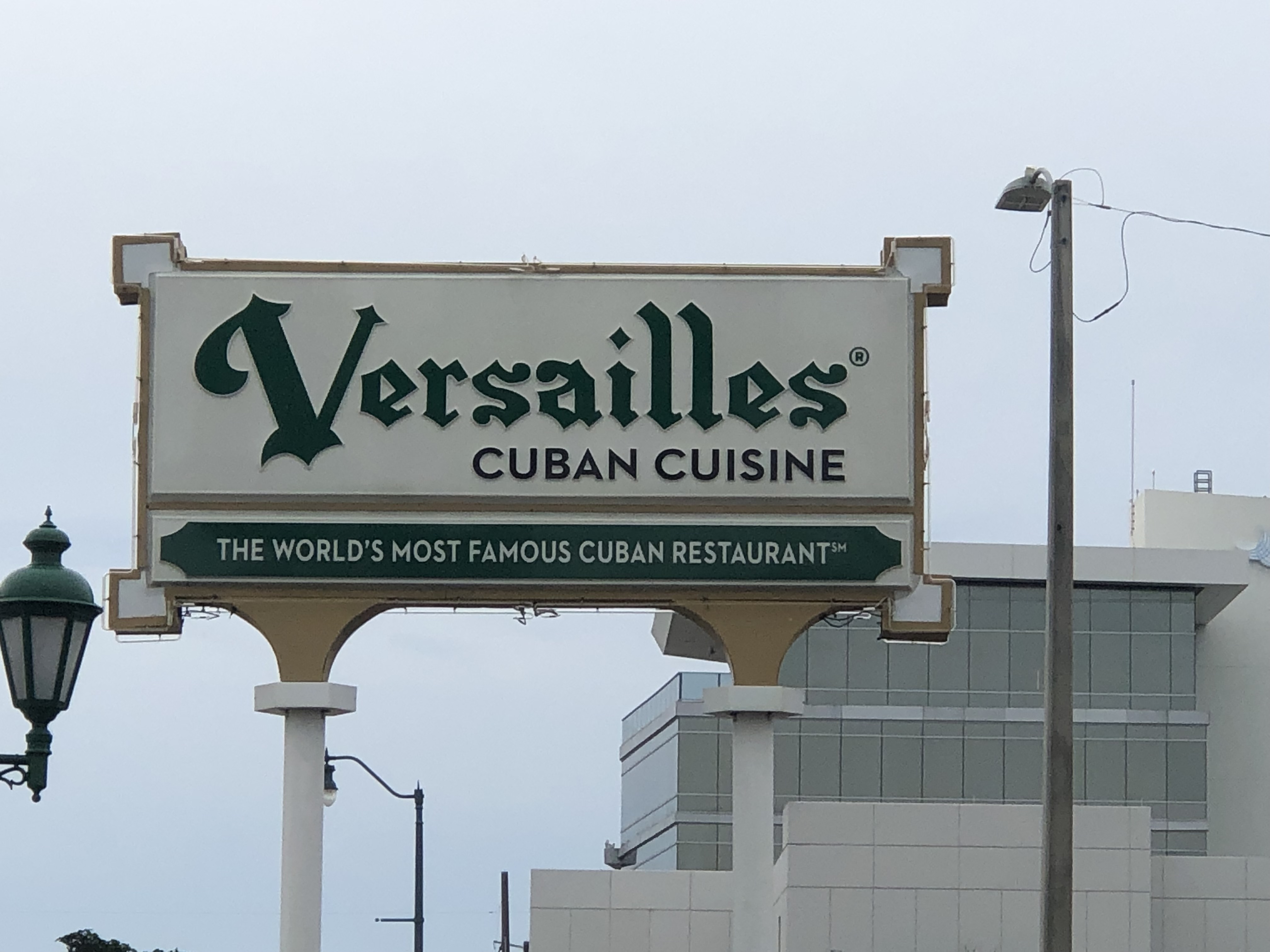
The boast of being the most famous Cuban restaurant is not far off. Politicians running for office who want to make an appeal to the Cuban community come to Versailles. Any time Cuba is in the news reporters flock here to take the pulse.
I’m not a politician or a reporter. I just wanted breakfast. The display cases you see are filled with Cuban pastries. I’m fine with pastries but I wanted a cubano. Here it is:

Cuban sandwich: ham and cheese and pickles. I really like the pickles
Little Havana: Historical Background
It all begins with Fidel Castro and the Cuban Revolution of 1959. Rich and middle-class Cubans fled to Miami. These migrants didn’t come to stay. They were waiting for a US-led coup that never happened because the Soviets came to Castro’s aid. Anyone remember The Bay of Pigs Invasion of 1961?
Diplomatic relations between the US and Cuba ended that same year.
Being in Pequeña Havana reminded me that in 2017 I had been to (Big) Havana, the one in Cuba. Thoughts of the Revolution prompted me to add this picture from Havana:
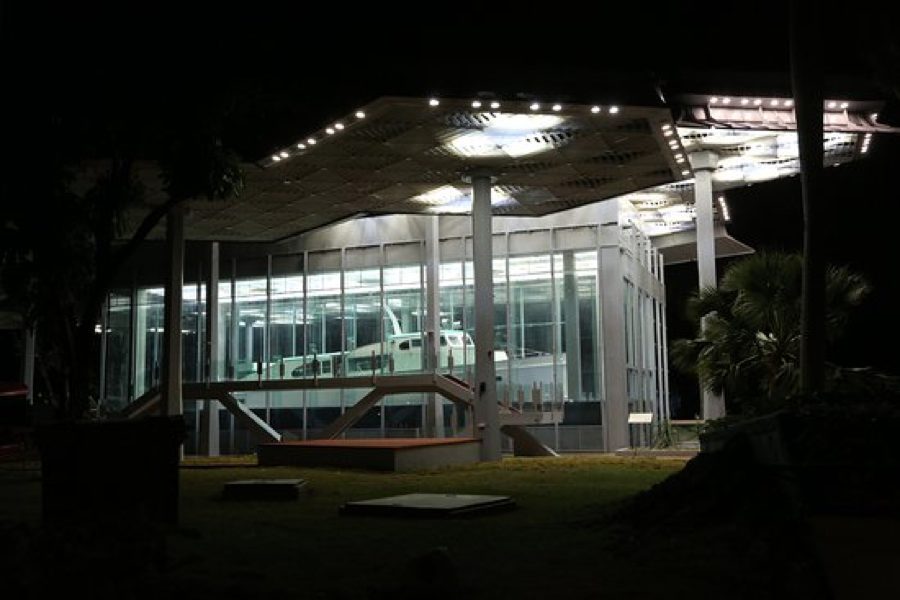
It’s of Fidel’s Granma yacht. It transported 82 fighters of the Cuban Revolution from Mexico in 1956. This display is in the center of town along with other revolutionary memorabilia. You really can’t miss it.
Until the Revolution a lively New York City-Miami-Cuba cultural exchange had existed. Think: Cuban-born Desi Arnaz, who played the bandleader Ricky Ricardo on the 1950s sit-com I Love Lucy.

Ricky playing the conga drum for Lucy. Love the sleeves on the guy in the background
Then there’s the KeyWest-Havana connection made famous by the writer Ernest Hemingway. One of his watering holes in Havana was The Floridita.
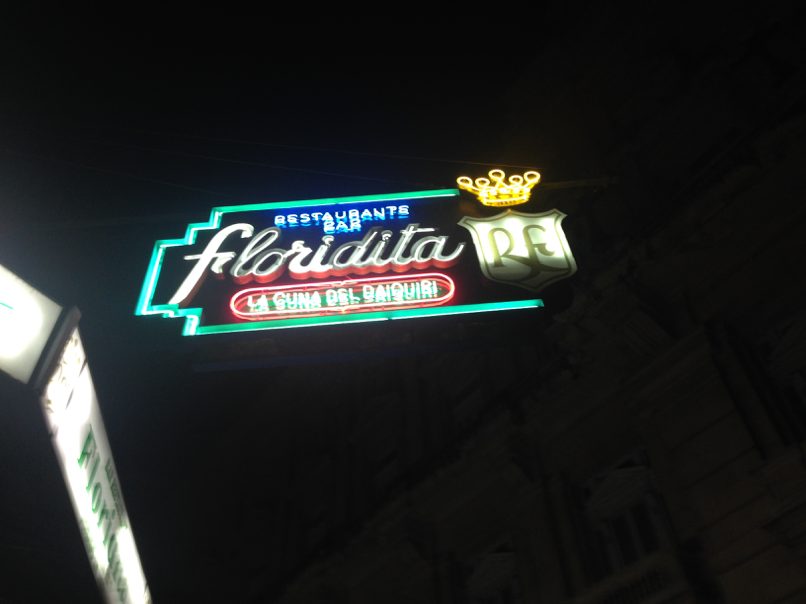
The sign reads: LA CUNA DEL DAIQUIRI ‘the cradle of the daiquiri.’ When we were in Havana, sure, I drank a daiquiri at the Floridita. Maybe two.
The distance between Key West and Miami is 90 miles (145 km).

The whole 90-miles-to-Cuba is a thing.

Little Havana: US Policy
Okay, back to Miami.
After the Cuban Revolution and until the mid-1970s around 500,000 Cubans came to Miami. They were mostly professionals and business people.
Then came 1980 and a downturn in the Cuban economy. What followed was an exodus of another 125,000 Cubans to the US. The newer immigrants were less well-off financially.
The Cuban Adjustment Act (CAA) of 1966 provided political asylum for Cubans who arrived in the US as refugees. They were granted immunity and allowed to apply for permanent residency after a year and a day in the US. The CAA is still in existence. Cuba is the only country for which this special law currently exists.
The Wet Foot/Dry Foot Policy of 1995 is an amendment to the CAA. Prior to 1995 anyone fleeing Cuba who was intercepted in the water, say by the Coast Guard, would be taken ashore in the US. After 1995 any Cuban intercepted in the water – a “wet foot” – would be repatriated. Anyone who made it to US soil – a “dry foot” – would be allowed to stay under the conditions of the CAA. Wet Foot/Dry Foot ended in 2017.
Those 90 miles are tricky and shark-infested but doable.
All this is to say that Cubans have long had special status in the US. Any Cuban arriving before 2017 would never have been considered “undocumented.”
Mexicans, Haitians and Central Americans have never had similar protection.
Little Havana: Present
In 1960 non-Hispanic whites made of 80% of Miami. My image is of retirees coming here from the Northeast and Midwest.
Today the city is 70% Hispanic, the lion’s share of which are Cuban-Americans who make up 54% of the city’s population. Little Havana used to be the place where all the Cubans lived but no longer. Cubans are spread out all over the city, and other Hispanic populations have migrated into Little Havana.
So I now consider this neighborhood more of a historical tourist attraction.
What did I see?
For one thing: rooster statues. Lots of them at various intervals along Calle Ocho. What the heck? I was told they’re a nod to the free-range urban roosters and chickens in the city. I have actually seen some of them, hunting and pecking about.
This guy, below, has a comb decorated as the Cuban flag. The top of his tail is the Mexican flag, the middle is the Spanish flag and the bottom may be the American flag.
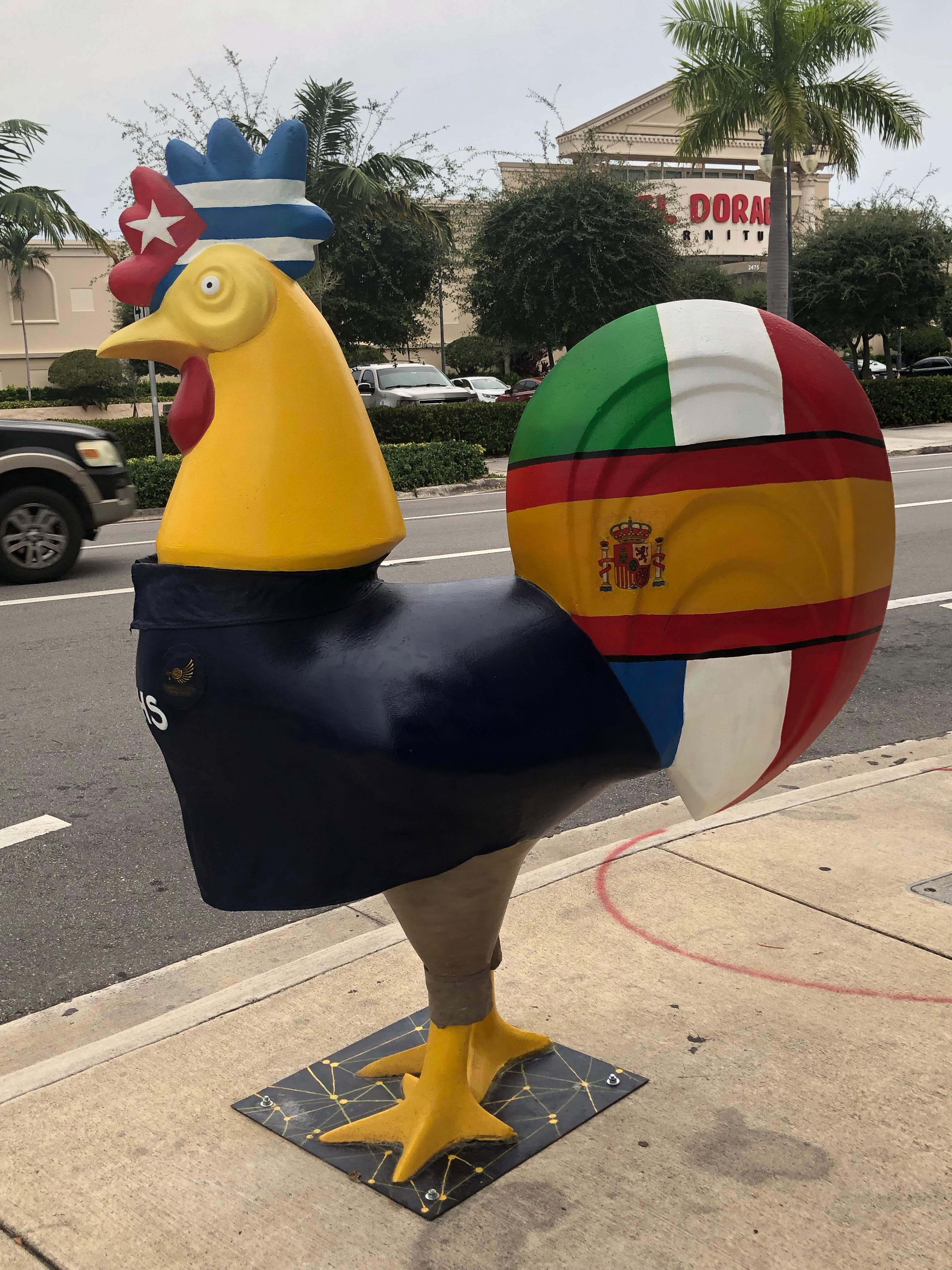
What else? Lots of signage in Spanish.
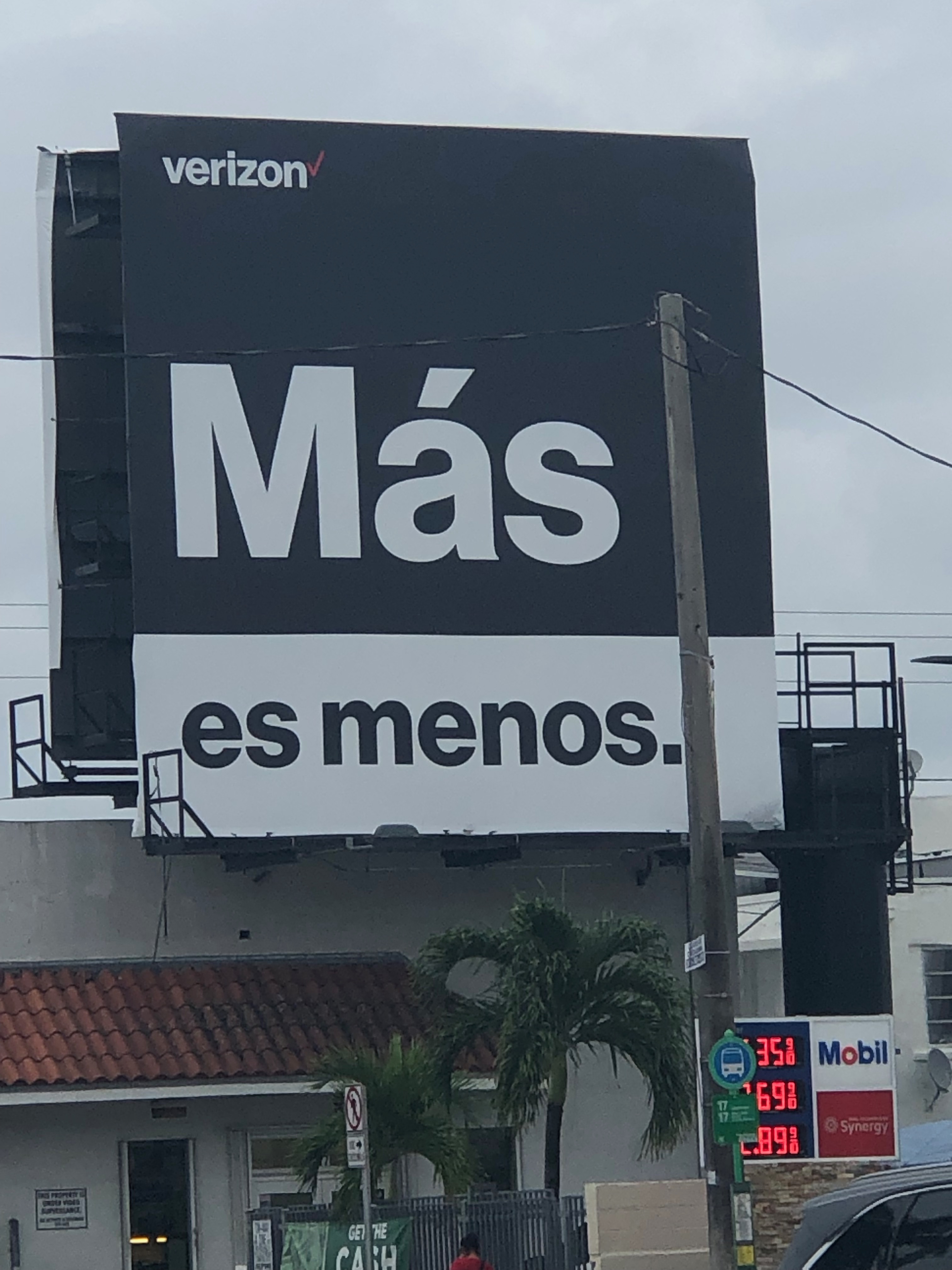
More is less – way to go for originality, Verizon
But, then, signage in Spanish is all over the city.
Domino Park is in the center of things, geographically and culturally.
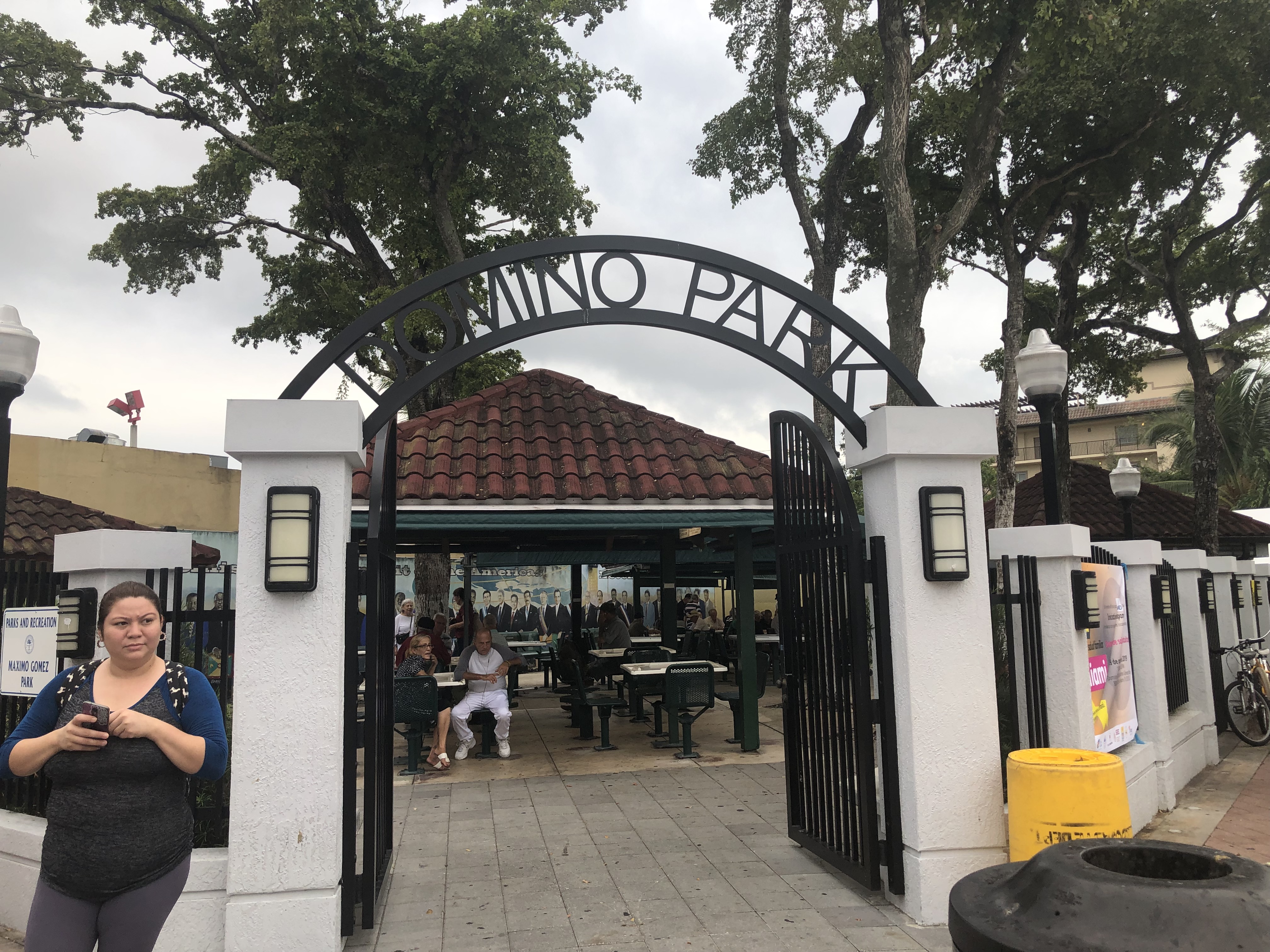
People really do go to play dominos
There’s Los Pinareños Fruteria, which looks straight out of the 1950s, and it is:

Along with well-known Latin music venues, such as Ball & Chain:

Otherwise Calle Ocho is a pretty typical urban street:
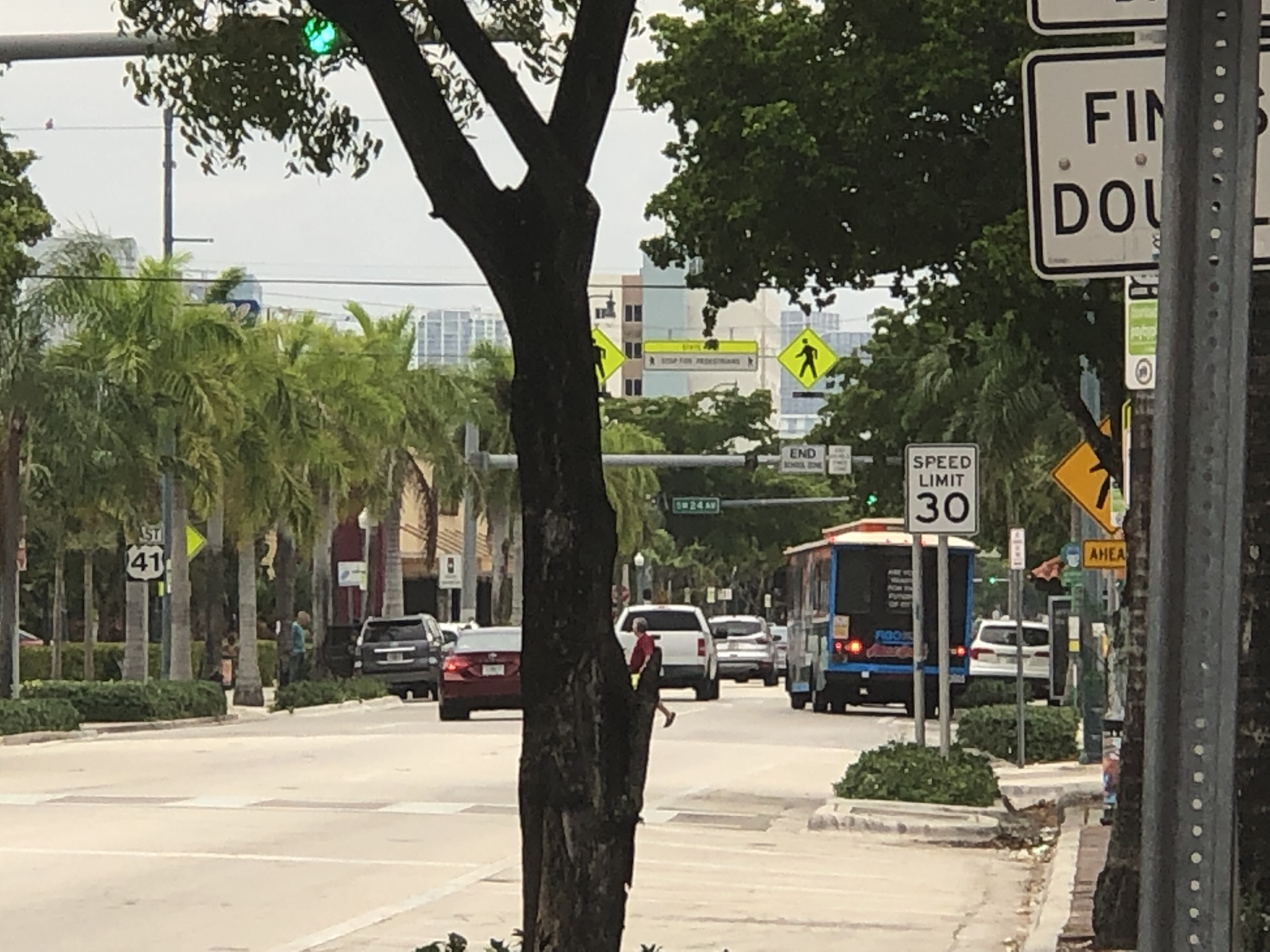
The apartment buildings of Brickell hover in the background
Final shot:
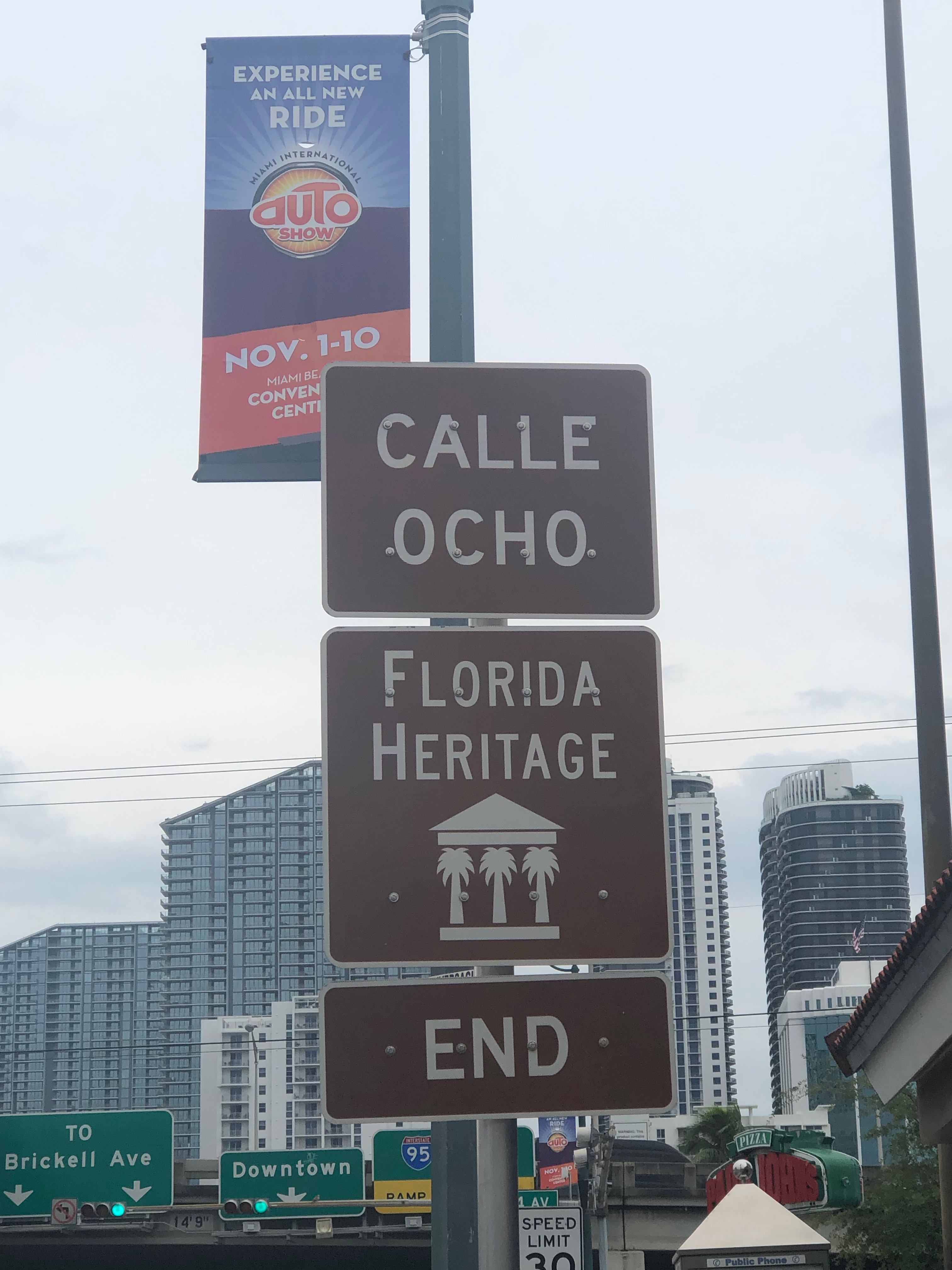
Categorised in: Adventure, Blog, Florida, Miami, North America
This post was written by Julie Tetel Andresen
You may also like these stories:
- google+
- comment



